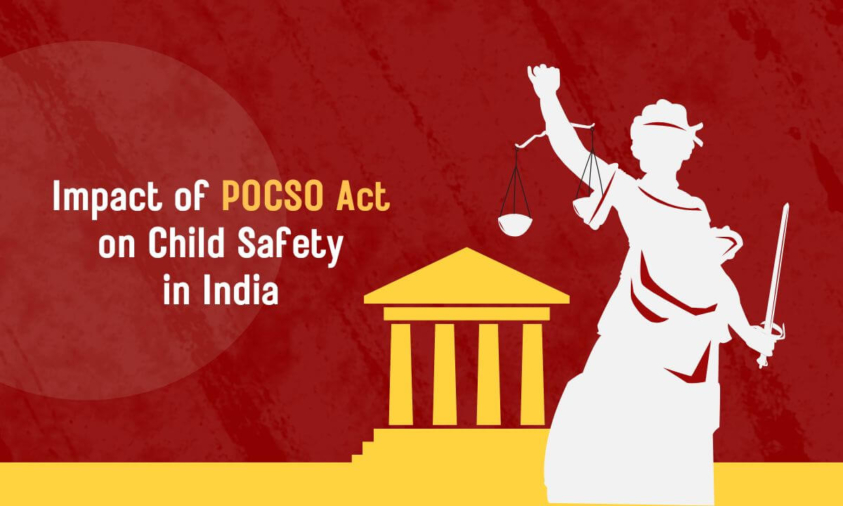Explore the impact of the POCSO Act on child protection in India—legal reforms, implementation challenges, and future directions.
INTRODUCTION
The Protection of Children from Sexual Offences (POCSO) Act, enacted in 2012, marked a significant turning point in India’s legal framework for child protection. Designed to address the alarming rise in child sexual abuse cases, the Act created a robust mechanism for safeguarding children’s rights and ensuring justice. Over a decade later, it is crucial to assess how the Act has impacted child safety in India and what challenges remain in its implementation.
The Need for POCSO: Filling Legal Gaps
Before the POCSO Act, India lacked a dedicated legal framework to tackle child sexual abuse. Existing laws, such as the Indian Penal Code (IPC), were often inadequate—they neither defined “child” consistently nor addressed the nuances of child-specific offences. The POCSO Act bridged these gaps by clearly defining sexual offences against children, establishing child-friendly judicial processes, and mandating special courts.
Key features of the Act include:
- A gender-neutral definition of a child (any person below 18 years).
- Special provisions for aggravated offences, such as abuse by someone in a position of trust.
- Mandatory reporting of offences.
- Protection of the child’s identity and privacy throughout the legal process.
Transformative Impact on Legal Enforcement
One of the most notable effects of the POCSO Act has been its influence on how law enforcement and judicial systems handle cases involving child sexual abuse. Special courts were set up across India to ensure speedy trials, while law enforcement received training to handle victims sensitively.
According to the National Crime Records Bureau (NCRB), the number of reported POCSO cases has increased steadily, suggesting greater awareness and a growing willingness to report abuse. While the rise in numbers may appear alarming, it often reflects an encouraging trend of reduced stigma and increased access to justice.
The Act also mandates time-bound investigations and trials, aiming for case resolution within a year. Though often missed due to systemic delays, this legal benchmark has emphasized the need for efficiency in child abuse cases.
Child-Friendly Judicial Procedures
A hallmark of the POCSO Act is its insistence on a child-centric approach. The law mandates that children should not be exposed to the accused during trial, allows for in-camera proceedings, and restricts aggressive cross-examination. These measures have significantly reduced secondary trauma for child victims.
Organizations like HAQ: Centre for Child Rights have played a key role in providing support personnel and psychosocial aid for child survivors.
Challenges in Implementation
Despite its strengths, the POCSO Act faces numerous implementation challenges. These include:
- Infrastructural limitations: Many states lack adequate numbers of special courts, and existing ones are overburdened.
- Lack of trained personnel: Investigating officers and judges often lack training in child psychology and trauma-sensitive procedures.
- Delays in justice: Despite the mandate for speedy trials, delays are frequent due to backlog, lack of coordination, and procedural issues.
- Misuse and Overreach: In certain cases, consensual relationships between adolescents have been prosecuted under the Act, raising concerns about the criminalization of teenage sexuality.
Moreover, the mandatory reporting clause has sparked debate. While intended to ensure that all cases reach the authorities, it has occasionally led to underreporting, especially by family members fearing social backlash or legal complications.
Recent Amendments and Judicial Trends
The POCSO Act has been amended several times to incorporate stricter punishments, including the death penalty for aggravated penetrative sexual assault. However, experts warn against relying solely on punitive measures. Effective deterrence, they argue, stems from certainty of punishment, not necessarily its severity.
Courts have also contributed to shaping the Act’s interpretation. In Satish Ragde v. State of Maharashtra (2021), the Bombay High Court controversially held that groping a child without “skin-to-skin contact” did not constitute sexual assault under POCSO. The Supreme Court later overturned this decision, reinforcing a child-sensitive reading of the law.
Role of Awareness and Education
Laws alone cannot safeguard children unless accompanied by widespread awareness. Initiatives like the School Awareness Program by the National Commission for Protection of Child Rights (NCPCR) and NGO-led campaigns have been instrumental in educating children, parents, and teachers about recognizing abuse and reporting it.
Digital platforms have also emerged as both threats and tools. Online grooming has risen but so has digital reporting. Helplines like Childline (1098) and government apps allow anonymous, accessible reporting for minors in distress.
Future Directions: A Multi-Pronged Approach
To truly ensure child safety, India must strengthen the POCSO framework through:
- Capacity Building: Regular training for police, judiciary, and support personnel.
- Sensitization: Community-level interventions to challenge stigma around reporting.
- Restorative Justice Models: Incorporating psychological healing and rehabilitation alongside criminal justice.
- Policy Synchronization: Harmonizing POCSO with juvenile justice, education, and digital safety policies.
Conclusion
The POCSO Act has been a transformative legal instrument in India’s fight against child sexual abuse. It has empowered victims, improved judicial responses, and sparked a broader social conversation. However, its promise can only be fully realized through sustained political will, investment in infrastructure, and community participation. A child-safe India depends not only on laws but on the collective conscience of society.
In case you are looking for customized child safety training, POCSO-related training, or POCSO advisory services, please feel free to reach out to us at +919004521614 or [email protected].
Authored by Tanvi Ojha, Content Writer Intern


 Cart is empty
Cart is empty 
